Every month, Tyla and I sat Elijah down in our little homemade photo studio and took a series of pictures. It was an interesting photo challenge for me and I learned quite a bit. I’m not saying the results are professional, but I thought it was worth sharing what I learned.
- Consistent Lighting – The more consistent your lighting, the easier time you’ll have combining all the photos into a collage. We accomplished this by purchasing some halogen work lights. They’re very hot so I bounce the light off the ceiling instead of frying and blinding my son.
- Consistent Backdrop – Tyla bought a big white sheet and a big black sheet from a thrift store. In a corner of one room, I put 3M sticky hooks on the wall. I covered the top two corners of each sheet on both sides with packing tape and then punched a hole through the corners making a cheap grommet. Those holes go over the sticky hooks and bam, you’ve got a simple backdrop that’s easy to remove if you need the space.
- Consistent White Balance – I purchased a color calibration card and got in the habit of snapping one photo with that in the frame each time. This makes it super simple to get the white balance consistent across all the photos even if your lighting isn’t the same every time. Unfortunately I didn’t buy it until a few months into the project and I never could get those first few months to be just right (we also didn’t have the halogen lights until later in the project so that compounded the problem.)
- Reference Photos – If you’re going to take the same photos every month, make sure you list them out on a sheet of paper or just print off the first set that you get. At some point you’re bound to make a mistake and use the wrong prop with the wrong backdrop. You can see that in our dog photos.
- Tagging – I use Lightroom to store and edit my photos. Whether you use Lightroom too or if you just put them in a folder, make sure that as you’re editing the photos each month, you tag or otherwise set aside the ones that you’ll use when you group the whole series.
Every month seemed to present it’s own challenges. For example, he’s very mobile now so getting him to stay in one place long enough to take a photo is nearly impossible. Other times it was hard to find a time when he was happy and we were free. But in the end we got a fun series of pictures that shows how much he changed over the first year of his life. Kudos to Tyla for coming up with the idea.
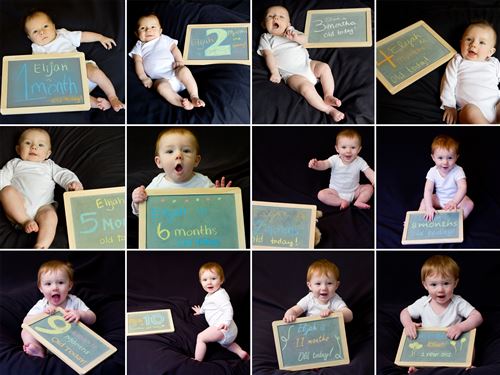
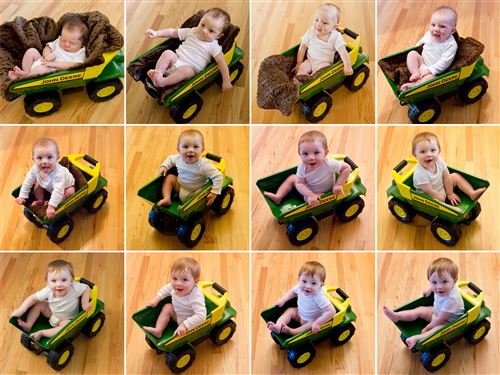



 [UPDATE: These links are broken now, but I’ll leave the text] I made a
[UPDATE: These links are broken now, but I’ll leave the text] I made a 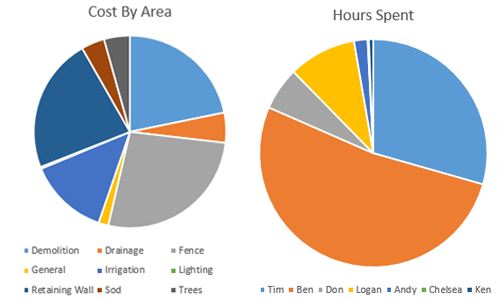
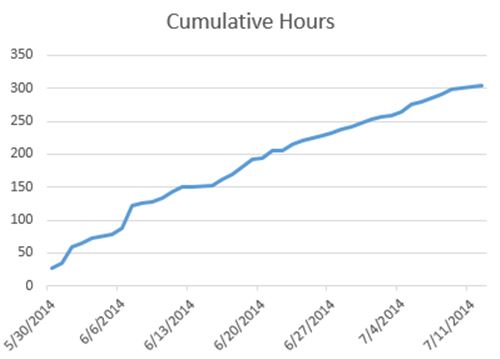



 For the Fourth of July, we were looking for a delicious side dish to take to Tim and Chelsea’s party. We ended up making this and wow, it was a big hit! It’s very simple and made good use of our new food processor. The
For the Fourth of July, we were looking for a delicious side dish to take to Tim and Chelsea’s party. We ended up making this and wow, it was a big hit! It’s very simple and made good use of our new food processor. The 
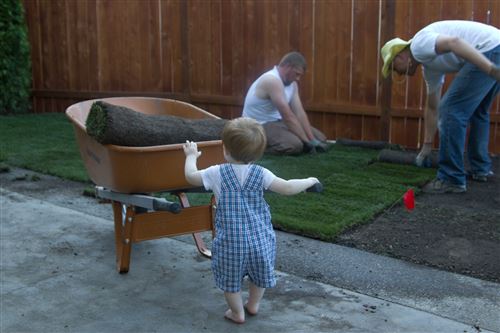

 Last November, I posted that I was
Last November, I posted that I was
The Rod Groon Shew
I don’t remember the first time that Dad and I found the Red Green Show, but we spent a lot of time together watching it. One episode that really cracked us up was when Harold read a letter from a reader with a broken keyboard. The O and the E were reversed. This all happened before everything was on the internet so I didn’t know what episode number it was or anything like that.
Thankfully now every episode of the Red Green Show is available (legally!) on YouTube. That still didn’t help me much though because there are hundreds of episodes to sift through. Then I found this page that lists out the subject of the “Male Call” segment of the show! Sure enough, it says that in the episode “Homemade Cheese” a reader writes a letter with a broken keyboard!
I found the episode on YouTube. Here it is for your enjoyment. The segment starts at the 19:06 mark.